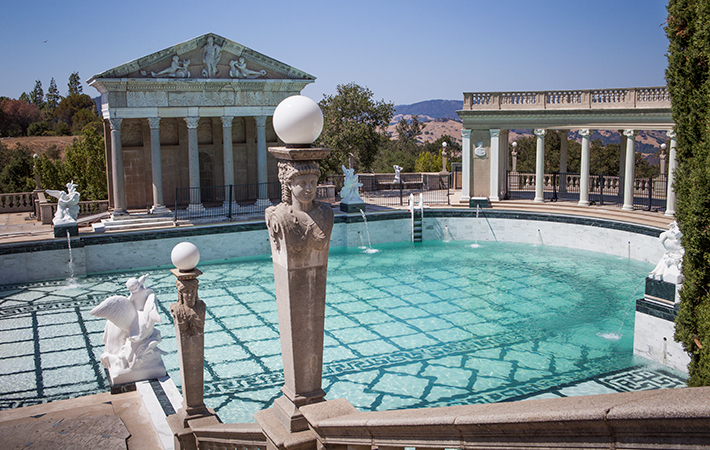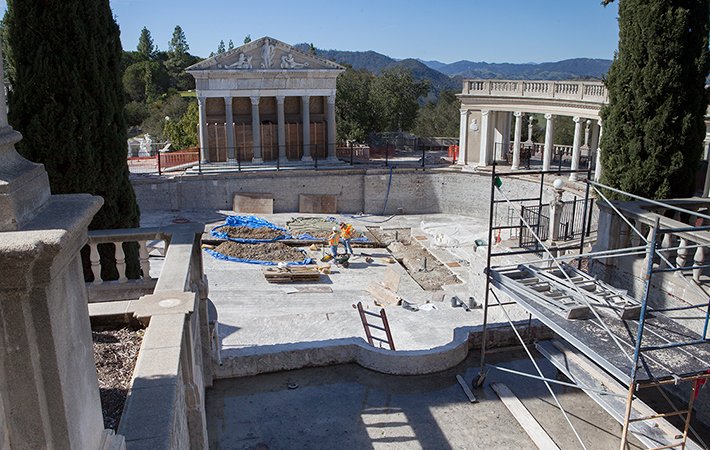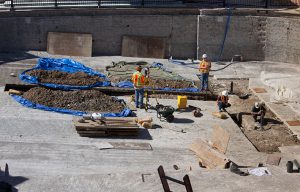
The Neptune Pool in the process of refilling in August 2018 after being empty for over four years.
Originally constructed in the 1920s, the Neptune Pool was designed and enlarged twice by William Randolph Hearst and the architect Julia Morgan into the pool that is seen on tour today. The Neptune Pool, built above ground, is line with marble and serpentine tiles. The ensemble consists of modern and ancient Roman architectural elements, Baroque and Art Deco sculptures, and decorative marble handrails. The final version of the pool as it stands at the Castle today is 104 feet long, 58 feet wide and 95 feet wide at the alcove. It is 3.5 feet deep at the west end, 10 feet at the drains, and holds 345,000 gallons of water. Other notable aspects of the Neptune Pool include the oil-burning heating system, the Vermont marble that lines the basin, gutters, and alcove, and four Italian relief sculptures on the sides of the colonnades.
The Neptune Pool was drained for renovation and repair of the plumbing and concrete shell as well as conservation of the Art Deco sculptures in 2008.
The nearly 90-year-old Neptune Pool was drained again in 2014 at the height of the drought due to cracks that caused it to leak up to 5,000 gallons a day. State Parks immediately launched a major renovation project to fix the leaks. Design work for the pool, including historical surveys, permitting, and environmental reviews, was completed by the end of 2015 and the construction contract was awarded in 2016.
 The renovations completed in August 2018 included the removal of more than 9,000 square feel of marble tiles, the repair of the concrete shell, the replacement of tiles with thousands of new marble tiles sourced from the original quarry in Vermont and the restoration of the Art Deco sculptures. The process of refilling the
The renovations completed in August 2018 included the removal of more than 9,000 square feel of marble tiles, the repair of the concrete shell, the replacement of tiles with thousands of new marble tiles sourced from the original quarry in Vermont and the restoration of the Art Deco sculptures. The process of refilling the pool began on August 14, 2018 after 4 years of standing empty during the restoration. The $10 million project was funded by Proposition 84 and the State Parks and Recreation Fund. California State Parks had many partners who helped make the restoration possible, including the Hearst Castle Preservation Foundation, Stephen Hearst, Hearst Corporation, Friends of Hearst Castle and the general contractor, T.B. Penick and Sons.
pool began on August 14, 2018 after 4 years of standing empty during the restoration. The $10 million project was funded by Proposition 84 and the State Parks and Recreation Fund. California State Parks had many partners who helped make the restoration possible, including the Hearst Castle Preservation Foundation, Stephen Hearst, Hearst Corporation, Friends of Hearst Castle and the general contractor, T.B. Penick and Sons.


